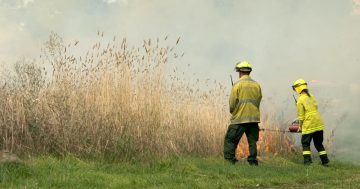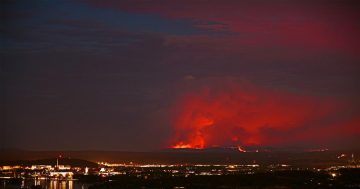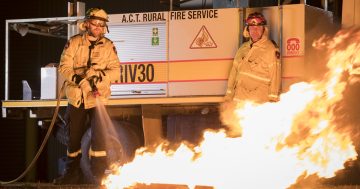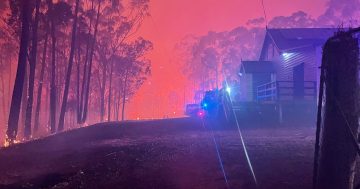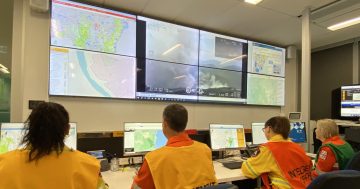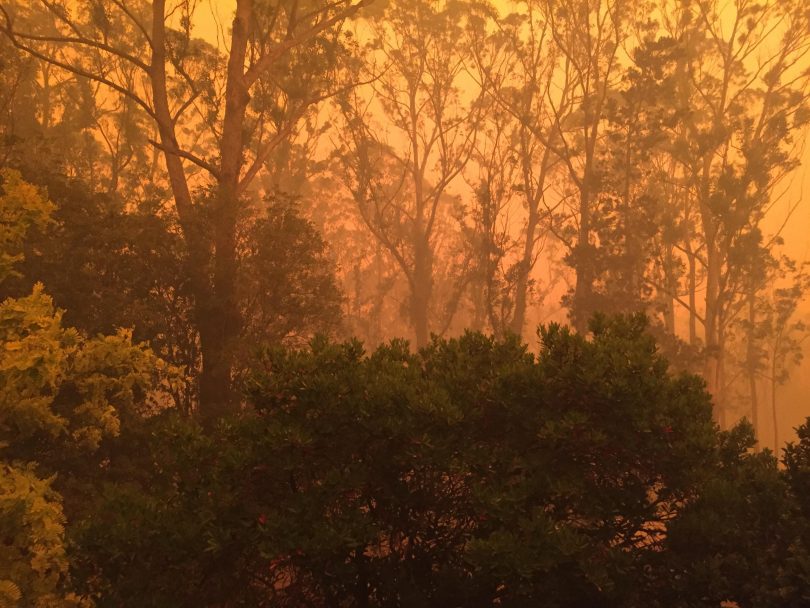
Greens leader and ACT minister Shane Rattenbury says claims that Greens policy is responsible for hazardous fuel loads is bogus. Photo: File.
Saturday marked the 17th anniversary of the 2003 bushfires – events that are still seared into the memory of every Canberran living here at the time.
This summer, we don’t need to make much effort to relive those memories, as we’re seeing the same kinds of images over and over again from around Australia, including in the region around us.
It’s disappointing yet unsurprising that at a time of climate emergency, there are those – including the Murdoch press – that seek to distract us all from the urgent need for real climate action before us, by instead making bogus and thoroughly debunked claims blaming “the Greenies” for preventing hazard reduction efforts.
As bushfire expert Professor Ross Bradstock, the director of the Centre for Environmental Risk Management of Bushfires at the University of Wollongong, has said, these claims are “very tired and very old conspiracy theories” and are “an obvious attempt to deflect the conversation away from climate change”.
Here in Canberra, we saw the 18 January 2003 fire creating its own weather system – that looming pyrocumulus cloud, the colour of a bruise. We saw small, isolated blazes ignited by lightning join together to create the monster that roared down on our city.
As Canberrans, we’re also uniquely placed to know that the “Greens ban hazard reduction” claim is a lie, because we’ve had a Greens Minister for Territory and Management Services – me – whose role from 2013 to 2016 included overseeing the agencies responsible for the management of fuel loads across the ACT landscape.
This was a practical four-year demonstration of how the Greens approach bushfire risk. Each year, with the expert advice of the agency, we developed and implemented comprehensive fire-related operational works plans. For example, in 2013-14 I oversaw a significant program of burning, slashing and grazing across 20,000 hectares of land in the ACT to help manage the increasing risk of fires.
The overall approach to bushfires in the ACT was – and still is – guided by our Strategic Bushfire Management Plan. We review the plan every five years, in consultation with the community and key stakeholders such as the ACT and NSW Rural Fire Services, rural lessees, traditional custodians and conservationists so that it is guided by the best available experience and knowledge. The knowledge sharing and continual learning through this process is incredibly valuable.
The Plan takes a strategic and long-term approach to managing fuel loads. Different techniques such as slashing, grazing, mowing, physical removal, chemical treatment and prescribed burning are used in different contexts, depending on the physical environment, the proximity to the urban environment and ecological sensitivity.
Good fire management is not just about burning. For example, Namadgi includes areas of rare ‘sphagnum bogs’ that house endangered species and play an important role in the ACT’s drinking water catchment. Obviously places like this require very careful management.
As the ACT Minister for Climate Change, it’s clear to me that bushfire seasons are becoming longer and more severe as the climate changes. There have been countless warnings about the impacts of climate change on bushfire risk, including in Ross Garnaut’s 2008 climate change review that clearly identified the likelihood of experiencing severe impacts from fires from as early as 2020.
Back in 2016, a Climate Council report found that the direct effects of a three to four-degree Celsius temperature increase in the ACT – and we are currently on track for that – could more than double fire frequency and increase fire intensity by 20 per cent.
These increasingly severe fire seasons are terrible for all the reasons we are currently seeing, but to make matters worse, they also make it harder to mitigate and prepare for bushfires. Firefighting is becoming much harder.
As climate change extends the hotter and drier weather, the fire seasons of Australia and the US are starting to overlap. Firefighting resources can no longer be shared between countries as effectively.
The usual off-season between dangerous fire periods is vanishing. Firefighters have less time for all their tasks, including hazard reduction burning, and the opportunity for them to rest is evaporating.
The only solution to these challenges is to embrace the truth and deal with the real threats and challenges, and we should hold our heads high in this city, because we’re doing that. We have experienced severe impacts on our city from fire, and we learned from it.
We’re now world leaders in taking steps to reduce our emissions, doing our part so that hopefully summers like this one won’t someday count as “mild.”
And we know very well that it’s not “tree-huggers” making Australia burn.
Shane Rattenbury is the ACT Greens leader and the ACT’s Minister for Climate Change and Sustainability.












